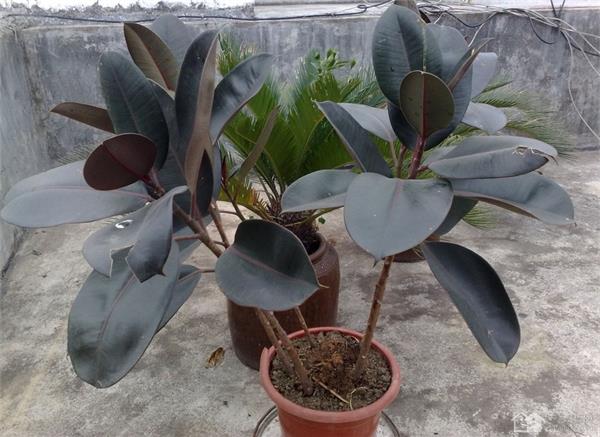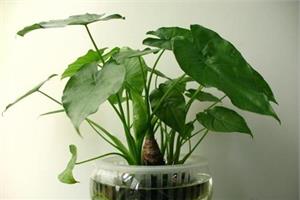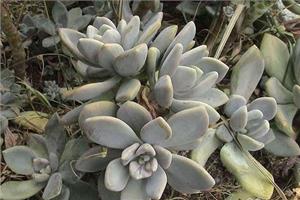Culture conditions of rubber trees matters needing attention in rubber tree culture
Many people like to raise rubber trees because their leaves are big and evergreen. But there are still many people who can't raise rubber trees or even raise them to death. Next we will learn more about the conditions of rubber tree culture and matters needing attention in rubber tree culture.

Rubber tree temperature
Rubber trees grow fastest at a high temperature of 30 ℃, but they are afraid of heat. When the weather is hot, attention should be paid to spraying water to the leaves to increase air humidity. It is not cold-resistant, the best overwintering temperature is not less than 15 ℃, and it is easy to suffer frost injury when the temperature is lower than 5-8 ℃.
Rubber tree degree illumination
Rubber trees like light, can withstand direct sunlight, but also can withstand semi-shade, and grow relatively well in semi-shade environment. Like warmth, not cold-resistant, like good ventilation, poor ventilation will lead to fallen leaves. Like moist, slightly resistant to drought. Like moist air, too dry for a long time, poor growth, smaller leaves.
Rubber tree soil
Soil selection: rubber tree has strong adaptability to soil, likes loose and fertile humus soil, and can tolerate light soil and slight acid. Young plants should be changed every spring, and mature plants can be changed every two or three years. Family cultivation in order to control the size of the plant, should not be replaced into the big basin.
Fertilizer and water management of rubber tree
Rubber trees are woody plants that need a lot of fertilizer during the whole growth process. In addition to using some horseshoe slices as base fertilizer in combination with changing pots every spring. In the peak growing season, the thin cake fertilizer or compound flower fertilizer dominated by nitrogen fertilizer is applied once every half month, and the fertilization should be carried out in the evening of sunny day and when the basin soil is dry, which is beneficial to the absorption of plants. If there is plenty of fertilizer and water, the growth is exuberant and the leaf color is thick green.
Rubber trees like to be wet, but avoid waterlogging and are not resistant to drought. Spring and autumn should make the basin soil in a moist state, and often sprinkle water to its leaves and around to increase air humidity. Rubber trees need a lot of water in summer, and they need to be watered every day to keep the basin soil moist and increase the frequency of watering. When the winter temperature is low, it is better to water the basin soil moist and dry, but if the winter temperature is about 10 degrees Celsius, the basin soil should remain moist, and the basin soil is easy to lose leaves when it is dry.
Proper watering during the growth period makes the basin soil completely moist. In midsummer, in addition to watering, water should also be sprayed on the leaf surface several times, and the amount of water should be reduced in autumn and winter. Watering should be controlled when the temperature is low in winter, otherwise long-term low temperature or wet basin soil can easily cause root rot, leaf withering, yellow shedding and even death.
Points for attention of rubber tree
The main results are as follows: 1. The top advantage of rubber tree is strong, so it should be pruned in time to promote its lateral branches.
2. Rubber trees can also tolerate shade, variegated leaf varieties need bright light every day, otherwise the leaf color is not good.
3. The leaves of rubber trees fall off suddenly: the species of tree type may be overwatered; the winter temperature is too low; the fertilization is too much and too thick; and the sudden cold wind blows. The type of hanging type may be that the light is too weak, or it may be moved from a suitable environment to another environment.
4. The lack of nitrogen fertilizer in rubber trees will lead to the shedding of the lowest old leaves, so fertilizers should be replenished in time.
5. Diammonium hydrogen phosphate and potassium dihydrogen phosphate should be used as topdressing in the vigorous growth season.
6. It is possible to keep the soil in a dry or slightly tidal state. Summer is the stage when rubber trees need the most water, and can be watered more. Winter is the period when rubber trees need the least water, so there should be less water supply.
The above is the introduction of this article, I believe you have a simple understanding after reading it, if necessary, you can continue to pay attention to the No. 1 home network for more information.
- Prev

How to cultivate Dishui Guanyin to change the vitality of the home environment
How to cultivate Dishui Guanyin to change the vitality of the home environment
- Next

What is the flower language of stone lotus? how to cultivate stone lotus?
What is the flower language of stone lotus? how to cultivate stone lotus?
Related
- Wuhan Hospital Iron Tree Blooming Result Was Instantly Frightened by the Gardener Master
- Which variety of camellia is the most fragrant and best? Which one do you like best?
- What is the small blue coat, the breeding methods and matters needing attention of the succulent plant
- Dormancy time and maintenance management of succulent plants during dormancy
- Minas succulent how to raise, Minas succulent plant pictures
- What are the varieties of winter succulent plants
- How to raise succulent plants in twelve rolls? let's take a look at some experience of breeding twelve rolls.
- Attention should be paid to water control for succulent plants during dormant period (winter and summer)
- Watering experience of twelve rolls of succulent plants
- Techniques for fertilizing succulent plants. An article will let you know how to fertilize succulent plants.

